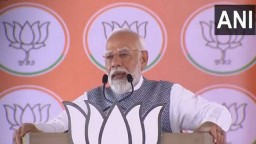Latest News
METAMORPHOSIS INDIAN DEFENCE PRODUCTION

Since independence, the goal set by our national leaders was of self-reliance that propelled India to nurture its development and gradually enlarge its defence industrial base to protect its borders against foreign aggression. But at the time of independence, the defence infrastructure and equipment what India inherited was, what was left behind by the colonial ruler. After meeting the basic needs of social justice and infrastructure, in 1958, the ordnance factories set up by the English formed the core group of industries for production of defence equipment. Consequently, Technical Development Establishment of the Indian Army and the Directorate of Technical development and production under defence science production merged together to establish DRDO.
As we all know, India’s commitment to Panchsheel and non-alignment in the era of cold war, the defence obviously was not considered as a prime agenda for allocation of resources. However, the reverses and set backs of 1962 Indo China war provided the right impetus for India’s defence industry. Over the period of 74 years, successive govts increased the defence expenditure from 92.74 crore in 1947 to almost 5.94 lakh crore in current budget.
Though, the Indian armed forces are responding to the security needs in the region and beyond to address issues of country’s sovereignty and integrity, the speed of upgradation and modernization of our forces so far, has been rather slow, and technologically, we have not achieved the desired expertise.
As India aspires to be a super power in the times to come, it must rely on the fact that all great powers of today support a flourishing arms industry. Unless we achieve self-sufficiency and self-reliance in developing indigenous, sophisticated, and state of the art equipment this dream of being a super power would allude us.
Today, our country faces the most complex security challenges that span from sub-conventional spectrum of warfare to nuclear conflict. Unresolved border disputes with our hostile neighbours, insurgency in various states and the urban unrest has further highlighted lack of Indian security environment.
Therefore, an urgent need was felt for augmenting our defence potential on land, sea, and air. The current dispensation at Delhi realized it and decided to give an added impetus to our erstwhile policies of not only producing defence hardware and technology for our country but also a strategic shift towards export of warfare equipment through ‘Make in India’.
Developing defence industry requires time, technology, trained manpower and budget. It indeed is a slow process that takes decades before dividends fructify. While in the 1980s, India galvanised its domestic defence industry by boosting investments in DRDO for indigenous missile systems like Prithvi, Akash and Nag, it also invested in aeronautical projects such as LCA and Light helicopters and Tanks. With the passage of time, by late 90s, an agreement with the Soviet Union was reached to make supersonic cruise missile ‘Brahmos’, through a joint venture.
The beginning of 21st century saw noticeable increase in India’s defence budget allocation. By the time 2015 ended, India was perceived by the world amongst seven largest military spending nations. There were no holds bar and by the end of another year, India clinched the title of being the fourth-largest military spending nation.
It was in these two years of 2015 – 16 that renowned companies ie; Airbus and Boeing started collaboration with Mahendra Defence Systems and Tata Advanced Systems. Lockheed Martin, and Safran soon established their presence in the Indian market to manufacture military hardware.
Shortly enough, fast-track projects like undocking of six Scorpene diesel-electric attack submarines and induction of Tejas in IAF demonstrated the capabilities of our scientists and resolve of our leaders. As on today, India has signed MoUs with more than 20 countries including United States qualifying for license-free access to a wide range of technologies.
Obviously, this has not been achieved without hiccups. May it be moving out of fifth generation stealth fighter aircraft manufacturing with Russia or failure of seven big ticket ‘Make in India’ projects like Mirage fighters in early 2000 or a few Naval projects like P751 or the light utility helicopter Kamov, all failed to see the light of the day.
Nevertheless, the giant strides taken by our defence industry in exporting of equipment like Tejas, off shore patrol vessel Barracuda, light weight Torpedoes or Artillery ammunition are adequate evidence for inching towards being a super power in next few decades. The incorporation of private sector in manufacturing defence systems has proven to be a master stroke in this field.
THE VIEWS EXPRESSED BY THE AUTHOR ARE PERSONAL
Col Anupam Jaitly (R) The writer is defence expert, motivational speaker and corporate trainer







.png)
.png)
.png)
.png)
.png)
.png)
.jpg)
.jpg)
.jpg)
.jpg)



.jpg)
